A sharp rise in seismic events in some areas of the United States where oil and gas production is booming is leading regulators and the industry to examine whether the two are related. And beyond that—what can be done to address the situation. In the first 6 months of this year in Oklahoma, for example, 268 earthquakes measuring higher than magnitude 3.0 have taken place in a state that experienced no more than three earthquakes a year of that magnitude from 1991 to 2008. The data comes from both the Oklahoma Geological Survey (OGS) and the United States Geologic Survey (USGS), the respective state and federal agencies tasked with studying the natural sciences, including earthquake hazards.
Mark Zoback, a Stanford University geophysics professor and a director of the Stanford Center for Induced and Triggered Seismicity (SCITS), said that although it has been known since the 1960s that fluid injection is capable of triggering earthquakes, the ongoing sequence of small to moderate magnitude seismic events so far inside the interior of a continental tectonic plate is unprecedented. One of the leading fault mechanics experts in the world, Zoback’s research is heavily cited by both government and industry studies on induced seismicity.
“This kind of increase in seismicity has not been seen in the modern era, so it is a very unusual phenomenon,” said Zoback, who wrote or cowrote nearly 300 technical papers. “Many of these are earthquakes that are above magnitude 3.0, which means that they are being widely felt.”
In January, the USGS issued a report titled “Man-Made Earthquakes Update.” It said the rise in seismicity in the central and eastern US that started around 2009 has coincided with the injection of waste water from oil and gas operations into deep disposal wells in several states, including Colorado, Texas, Arkansas, Oklahoma, and Ohio.
Also this year, USGS scientists coauthored a report attributing the November 2011 earthquake near Prague, Oklahoma, to injection well operations and said the magnitude 5.7 event may be the largest human-caused earthquake ever associated with wastewater injection. A 2012 report from the Ohio Department of Natural Resources (ODNR) on a series of 12 small earthquakes, ranging from magnitudes 2.1 to 4, concluded that injected fluid from a 3-month-old disposal well may have communicated with a previously unknown fault and caused seismic activity in the state.
Because of a lack of scientific data and an insufficient number of monitoring systems, regulators and the industry cannot attribute the vast majority of seismic events to individual well locations. To get a better handle on the situation, oil and gas regulators from the 12 states most affected by induced seismicity have partnered with the Interstate Oil and Gas Compact Commission, a multistate government agency focused on energy development, and the Ground Water Protection Council, a nonprofit organization formed by state water and underground injection regulators, to form an Induced Seismicity by Injection Work Group. The group is sharing research and experiences to establish links and minimize the risk of injection-induced seismicity.
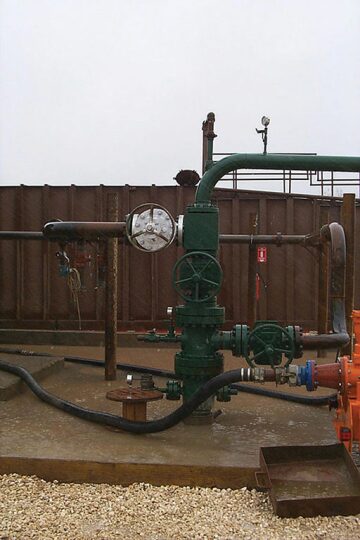
Some states have adopted new regulations. In Ohio, state regulators introduced stricter permitting conditions for drilling near faults or areas with a history of seismicity. In Oklahoma, which overtook California as the most seismically active state this year, the governor approved similar regulations that go into effect this month and require injection pressure and volume data to be recorded daily and provided upon request.
The US Environmental Protection Agency estimates the number of permitted wastewater injection wells to be 151,000. However, industry and academic experts suspect that only a small percentage, in the low single digits, may be responsible for induced seismicity. For instance, in Oklahoma, the OGS estimates that at most, 2% of disposal wells from 2010 to 2012 triggered earthquakes. No one can say for sure how many wells may be causing seismicity due to the lack of available data that could positively link possibly induced events to a particular well.
Zoback and oil and gas industry experts involved in the ongoing research agree that while it is important to recognize that the hazard associated with induced seismicity is generally low, the increased number of events near populated areas such as Oklahoma City, Oklahoma, and the growing public concern warrant the intensifying effort to find ways to reverse the trend.
“We need to take a hard look at this in a scientific way and inform regulators of what we know so they can make informed decisions on how to proceed in the future,” Zoback said. “Right now, there may be a lot of unsubstantiated worries. But we still have to respond to the fact that earthquake rates have increased dramatically in a number of parts of the country, and at least in some of these places, the increase in seismicity appears to be associated with increased injection.”
What is Induced Seismicity?
A comprehensive 2-year study by the US National Academy of Sciences published in 2012 concluded that the injection of waste water from oil and gas activities into disposal wells does pose some risk of inducing seismicity. The report also noted that over the past several decades, there have been only a few documented cases relative to the large number of disposal wells in operation. However, since that report, more research has been produced that ties recent events to specific well locations. Some of these case studies will be presented at a workshop on induced seismicity in Banff, Alberta, Canada, this month. It will be jointly hosted by the Society of Petroleum Engineers (SPE), the Society of Exploration Geologists (SEG), and the American Rock Mechanics Association (ARMA).
According to the USGS, induced seismicity, as related to energy production, occurs when there is a change in pore pressure or a change in stress, or both, near faults that are stable, but under critical stress. The injection of fluids from a disposal well can potentially increase the pore pressure on a potentially active fault, resulting in a sudden slip that generates seismic waves. In short, an increase in pore pressure may trigger the release of stored energy in the rock surrounding a fault, causing an earthquake. Zoback said that these faults, which are being stressed by natural geologic processes, would likely have produced an earthquake at some time, but perhaps not for hundreds or thousands of years into the future as the stored energy accumulates very slowly. For this reason, seismicity induced by wastewater injection is often, and interchangeably, referred to as triggered seismicity.
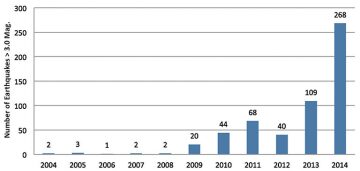
There are many fewer cases of induced seismicity caused by hydraulic fracturing operations than those suspected of being caused by disposal wells. Local regulatory agencies have investigated seismic events involving fracturing in Oklahoma, Ohio, and British Columbia, Canada. In 2012, Canadian regulators and Apache concluded that its operations in the Horn River area of British Columbia did in fact activate a fault, resulting in a series of minor earthquakes, with the largest being a magnitude 3.6.
Steve Willson, who investigated seismic events as the senior staff technical adviser of geomechanics at Apache, said the seismicity involved unique geologic factors found in some parts of Canada, much less so in the US. “But it has been documented that in certain cases, under stress regimes that are not common in the lower 48 states, you can occasionally create induced seismicity from hydraulic fracturing,” he said.
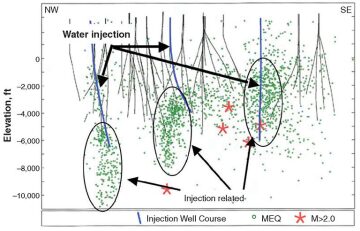
Another reason for hydraulic fracturing being considered as far less of a seismic risk is that most fracturing operations involve comparatively low-volume injections and short durations, maybe hours in most cases. Disposal well operations are long-duration, and sometimes high-volume, operations that can inject for years with only short periods of interruption. Even more obscure are cases of induced seismicity caused by oil and gas production operations. A notable exception is a series of seismic events attributed to production from the largest gas field in the Netherlands. In this case, it is believed that formation compaction over time has played a role in shifting pressure into a fault system.
While they have a good understanding of how induced seismicity by way of disposal wells may occur, seismologists and researchers say they usually lack critical information regarding local geologic stresses, rock properties, fault locations, and the characteristics of the disposal reservoir to produce accurate computer models that would help them understand induced seismicity, and one day perhaps prevent it from occurring.
Working on Guidelines
Industry groups and subsurface experts have been working on a series of guidelines they believe will mitigate the risk of inducing earthquakes as a result of disposal well operations. One of these groups is the American Exploration and Production Council (AXPC), a national trade association representing 34 independent operating US companies that include members such as Apache and Chesapeake Energy.
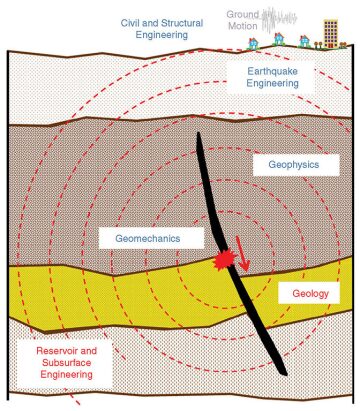
Last year, an AXPC presentation described the framework of a risk mitigation plan that companies could adopt if one of their disposal wells is suspected of inducing seismicity. It offers steps for screening, evaluating, planning, monitoring, and mitigation. Some of the proposed measures call for new wells and wells of concern to be evaluated for their seismic risk. This involves determining the possibility of seismic events and the impact of ground motion on the local population, property, and the environment. Actual ground shaking susceptibility is an important factor, in addition to the earthquake’s magnitude, when assessing potential damage.
If induced seismicity is suspected of occurring, the risk mitigation steps in the plan call for an investigation of the event, a modification of injection parameters as necessary, and a re-evaluation of the operations and local geology. The widespread adoption of these steps, and similar ones proposed by other researchers and regulatory bodies, are on hold because the possible solutions and ways of implementing them are still under review. “Given the emergence of this issue during the last 2 years, the industry best practices for each local state situation, as well as regulatory requirements continue to evolve,” said Kris Nygaard, a senior consultant at ExxonMobil and a subject matter expert who advises industry trade groups on induced seismicity.
Nygaard added that a number of exploration and production companies are also contributing to and taking part in university research consortiums. One example, the SCITS has several major oil companies as members, such as Chevron, ExxonMobil, BP, and Shell, as well as independents and service companies, including Devon Energy, Nexen Petroleum, Schlumberger, and Halliburton.
“Some companies are pursuing internal research on this topic by collecting microseismic data, and some are exploring development of advanced geomechanics modeling capabilities,” Nygaard said. “Others have donated the use of seismometers and/or provided subsurface data to support academia and government research efforts investigating the possibility of induced seismicity in specific areas.”
The AXPC and other trade groups, including the Texas Oil and Gas Association, are focusing on the same critical factors in the quest to identify high-risk wells. They are:
- The monthly total volume of injected fluids
- The peak rate of injection each month
- The proximity of the disposal well to the hard crystalline basement rocks that underlie sedimentary layers
- The distance of a disposal well to a known fault zone
“Most of the industry is coalescing around a series of guidelines that I think will be forthcoming in the next 6 months or so,” said Willson, who serves on an AXPC induced seismicity work group. “And these are the four issues people are beginning to formulate guidelines around.”

Better Injection Reporting Needed
Apache is one of the operating companies formulating guidelines for its operations in areas where induced seismicity is a concern. The company plans to review the inventory of disposal wells that it uses, both the ones that it operates and those operated by smaller third-party companies. In some cases, the latter may lack detailed subsurface knowledge, making it difficult to assess the risk for each well. “Therein lies some of the challenge in terms of regulation and scientific understanding,” said Willson. “It is possible that they may not have as complete of data set as an operator might have in the areas where they operate.”
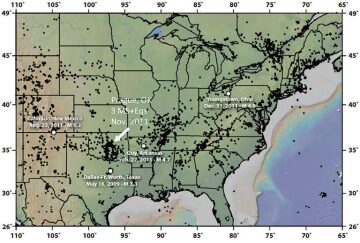
Further hampering the data collection effort by companies and researchers is that historically, disposal well operators have been required to report the monthly averages of injection rates and pressures once a year. Ohio and Oklahoma are the first two states to approve new rules that require operators to record data on a daily basis and to provide them to regulators upon request. In August, Texas regulators proposed new rules that would require operators to provide additional geologic information, including local seismic data from the USGS, when applying for a new disposal well. If the rules are approved this fall, Texas regulators will also be able to modify or suspend an existing disposal well permit if it is determined to be causing induced seismicity.
For researchers and groups such as the SCITS, the lack of timely and accurate injection data means the creation of predictive computer models is nearly impossible. “Much of the data that is being reported is a year old, so if something starts to happen you do not have much to go on,” Zoback said. “Technologically, we can do a much better job.”
Filling in the Map Gap
Despite the ability to observe seismic events, tying them together has revealed several scientific shortcomings that seismologists and researchers say limits their understanding and ability to address the problem. The USGS regional seismic monitoring system, a nationwide network of seismographs used to provide timely information about earthquakes, is inadequate for pinpointing the exact location of an earthquake in most areas of the US. This piece of information is important when one considers that many disposal wells in states such as Oklahoma and Texas are located just a few miles apart from each other.
Studying Fault PhysicsSeismologists from Southern Methodist University (SMU) in north Texas are working to understand the physical properties inside the Earth’s crust that control the occurrence of induced seismicity by investigating a series of suspected induced seismic events in the vicinity of two small towns: Reno and Azle. Their findings are being shared with the Texas Railroad Commission, the state oil and gas regulatory body. The ongoing study provides an example of how using a tighter network of seismic stations can improve the accuracy of locating seismic events. In Texas, seismic stations are located so far apart that the location of an earthquake sequence is only capable of being isolated to areas as large as 40 to 50 sq miles. As they began to record the localized primary and shear waves, the two types of seismic waves generated in an earthquake, “all of those events began to locate on a linear trend that was about maybe 400 m to 500 m long, and at a common depth,” said Brian Stump, a seismology professor at SMU. Stump and fellow seismologist Heather DeShon said their goal is not just to identify potential links between the seismicity and injection operations, but also to quantify and model how different volumes of fluids, pumping rates, and duration affect the stresses along the faults. With the information on hand, DeShon believes that work can begin on predictive computer modeling. “I do not think there is disagreement that in some situations, wastewater disposal can be linked to earthquakes,” she said. “The thing to understand is that the actual physics behind the link is poorly understood and that is what we would like to overcome with our current study of the ongoing sequence in Azle.” 
|
Knowing where the faults are ahead of time is also a major aim of researchers, the industry, and regulators. To this end, the SCITS is carrying out a pilot project in Oklahoma to produce publicly accessible geologic maps that separate “old and dead” low-risk faults from the ones that could potentially be activated by the pressures generated by high-volume fluid injection. “There are old faults nearly everywhere, but it is only a subset of those faults that are potentially active in today’s stress field. If we carefully map these forces, as well as the faults that are present in the subsurface, we can identify which of the faults are worrisome,” said Zoback. “While you are not going to be able to identify all of the faults that are present, the real issue is staying away from the larger faults that would be capable of producing a damaging earthquake.”
Nygaard said a process should be implemented to update the maps as new information is submitted. “This would need to be a long-term effort involving collaboration between state and local geologic entities, the USGS, and operators and implemented in a way that is consistent with proprietary data considerations,” he said.
Working on the same front to gather the data that will help narrow the search for seismic-inducing wells, the USGS has partnered with the OGS to disperse more seismic stations into the field. Today, there are only about 15 seismic stations in operation in Oklahoma. The USGS plans on increasing the number of stations moderately, but it acknowledges that to precisely locate the earthquakes’ hypocenter—the point of origin in the subsurface—hundreds of stations that it does not have the resources for would be needed.
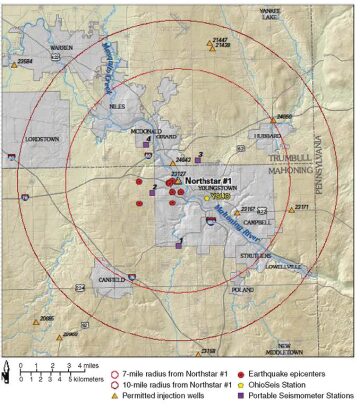
“We do feel that we can get a better control on the location with the new instruments going in,” said Robert Williams, a geologist and coordinator of the USGS Earthquake Hazards Program. “But we cannot pin every (suspected induced) earthquake to a disposal well. That is probably not ever going to be possible unless we have seismographs at every disposal well.”

Aside from injecting into a fault, in a few documented cases, Nygaard pointed out that earthquakes were triggered when fluids were directly injected or migrated into a very low permeability rock layer called the crystalline basement. The basement serves as a geologic borderline, with the sedimentary rocks above it, and the Precambrian metamorphic and igneous rock layers below. In oil and gas exploration, the latter are of little interest because they contain few if any hydrocarbons; however, the rocks under the basement are of critical importance in regard to earthquakes since they are significantly older and more prone to faulting. “One very straight forward opportunity to mitigate the hazard is to avoid injection into the crystalline basement if unstable faults may be suspected,” he said.
As part of the new regulations introduced this year in Ohio, operators are prohibited from injecting fluids into the depth intervals where the basement might be affected. The reforms were made in direct response to a series of earthquakes in Youngstown, Ohio in 2011, that the ODNR and independent geologists determined were the result of injections from a single disposal well, the Northstar 1, located near the downtown area. A moratorium remains in place for the well, along with several nearby disposal wells.
Stoplights for Disposal Wells
Compared with the monitoring and mitigation practices in use today, or lack thereof, the proposed stoplight system, also called a traffic light system, is intended to raise the bar considerably. The system is cited in numerous studies and technical papers on induced seismicity as a potential pillar of risk mitigation.
Shawn Maxwell, president and chief technology officer of Itasca Microseismic and Geomechanical Evaluation, said implementing such a system as an industrywide best practice is a probable next step for oil and gas companies. It remains a question whether it will become mandated across the board for onshore US operators. As chairman of this month’s workshop on induced seismicity, Maxwell said some companies are presenting draft protocols based largely on the stoplight monitoring system. “The (stoplight) monitoring systems are fairly well known in the geothermal community,” he said. “It is simply a matter of adopting them to the oil and gas activities in order to apply the same mitigation techniques.”
The stoplight system was developed in response to incidents of induced seismicity that were determined to be caused by geothermal geyser wells in California. It has been credited as successful in reducing the occurrences of seismic activity in the state and at other geothermal sites around the world. So far, only Ohio has implemented the statewide stoplight protocols for disposal wells and for hydraulic fracturing operations. In July, the Colorado Oil and Gas Conservation Commission, the state’s regulatory body, introduced a stoplight system for an injection well near Greeley. “Continued use of the injection well will be reviewed and may be halted if seismic events within a 2.5-mile radius of the well occur at or above a magnitude of 2.5, the USGS default threshold for displaying seismic events,” the commission said in a press statement. British Columbia, Canada, and areas in the United Kingdom also require stoplight systems for hydraulic fracturing.
Although the system is designed to be intuitive, it requires a lot of input data to be useful. In brief, a green light indicates operations are not causing seismicity and can continue unabated; a yellow or amber light means small magnitude seismicity has been detected and injections should slow down or otherwise be adjusted; a red light means a seismic event large enough to be felt has occurred and activities should be halted.

A stoplight system would alert the operator of a disposal well, and very possibly a regulator, if the seismic activity deviated from the historical baselines, which would need to be established first through extensive monitoring. Procedures are required for such monitoring and warning systems when a seismic activity approaches or exceeds the various levels of the stoplight system. Although Oklahoma officials are working out the details, they have said a red light would likely be issued if a magnitude 1.8 event occurs, or if the official state seismologists determine the rate of the earthquake is increasing compared with the baseline rate.
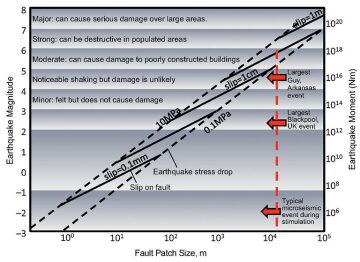
“To be reasonable from both an industry and regulatory perspective, stoplight system thresholds should be based on the actual level of risk associated with local conditions,” said Nygaard. For instance, he said, “a remote location, sparsely populated, would likely warrant a higher threshold than an urbanized area with high population density.” This consideration might mean that low-risk areas are monitored with less intensity than for higher-risk areas where real-time monitoring and fast-reacting mechanisms could adjust or shut down operations. “Given the geologic differences and diversity that exist, it is not rational to adopt a one-size-fits-all regulatory approach,” Nygaard said.
The Role of Microseismic
Listening for tiny pops and cracks in the subsurface may provide new and improved insights into induced seismicity. These tiny sounds are indicative of minute movements in the rock, known as microseismicity. Too small to be detected with conventional instruments, ultrasensitive systems attuned for specific sounds can be placed inside and around disposal well boreholes to detect these movements.
This technology is widely used today to monitor and evaluate hydraulic fracturing treatments, carbon capture sequestration, and in geothermal operations. Deployments are few, but interest is growing in using microseismic arrays to not only predict an induced seismic event, but also provide enough warning time to prevent one.
Meeting of the MindsThis month, the SPE, the Society of Exploration Geophysicists (SEG), and the American Rock Mechanics Association (ARMA) are jointly holding the Injection Induced Seismicity Workshop in Banff, Alberta, Canada, to update the oil and gas industry on the situation. The industry’s positions and ways to address the matter will also be discussed. The first workshop was held in Colorado in 2012. “When we held the first one, I think it was more a question of reporting to the industry the state of knowledge within the academic community,” said Shawn Maxwell, an organizer and reviewer of technical papers submitted for this year’s meeting. “What we will be discussing in much more detail this time around will be different modeling approaches to try to predict what is going to happen for a given operation. That kind of predictive capability is important to engineering a solution when we start to encounter a problem.” Maxwell, president and chief technology officer of Itasca Microseismic and Geomechanical Evaluation, said that 70 papers were submitted by about 125 attending professionals, engineers, and scientists—too many he said for all to be shared during the 3-day workshop. “I think that is an indication of the concern everyone has with the issue,” he said. Of the papers, Maxwell said a large share is case studies in which researchers or companies believe they have identified, or strongly suspect, a case of induced seismic activity due to oil and gas operations, or some other industrial activity. Some of the case studies that will be presented show a clear cause-and-effect relationship between disposal well injection activity and seismic events, he said. But in other case studies, Maxwell said the cause-and-effect relationship is less defined and therefore will be open to debate. “I expect some good scientific debate,” he said. “It makes it interesting to deal with the problem. If we cannot even agree what is causing some of these problematic cases, and whether it is natural or triggered by industrial operations, it makes it difficult for the industry to react to it.” |
Mike Mueller, vice president of technology development at MicroSeismic Inc., said that both academic seismology and industry seismology recognize that almost all larger seismic events are preceded by microseismic events so minute that they cannot be felt on the surface. “Microseismicity tends to swarm and cluster and boom before a felt event,” Mueller said. “The idea is that if you can monitor, you can detect the swarming, the microseismicity, and shut down an operation before you get to felt seismicity.”
The company has deployed its technology to Blackpool, UK, where it is being used in a stoplight system for hydraulic fracturing operations. Mueller said the permits allowing hydraulic fracturing to begin would not have been issued without the monitoring system. The technology is also used in British Columbia, Canada, where a series of small earthquakes was determined to be generated by hydraulic fracturing. In both instances, a regulatory driver was put in place that mandated the use of the technology for monitoring and prevention.
So far in the US, only Ohio has enacted a policy that mandates the use of microseismic monitoring systems before and during disposal well operations as part of the stoplight system. In areas without a regulatory driver, Mueller said that concerns over future liabilities and the fear of losing the so-called license to operate due to a confirmation of induced seismicity have kept some companies from adopting the technology for this application. “Because there has not been a lot of regulation, companies have not had a ‘need’ to do this monitoring,” he said.
For Further Reading
SPE 2558 Waste Disposal and Earthquakes at the Rocky Mountain Arsenal, Derby, Colorado by H.K. van Poollen, H.K. van Poollen and Associates.
SPE 166430 Inducing Earthquake By Injecting Water in a Gas Field: Water-weakening Effect by Axel-Pierre Bois, CurisTec, et al.
National Research Council. 2013. Induced Seismicity Potential in Energy Technologies.
Zoback, M.D. 2012. Managing the seismic risk of wastewater disposal. EARTH, April 2012, 38–43.
Nygaard, K.J., et al. 2013. Technical Considerations Associated with Risk Management of Potential Induced Seismicity in Injection Operations. 5to. Congreso de Producción y Desarrollo de Reservas, Rosario, Argentina.
Bull, J. 2013. Induced Seismicity and the Oil and Gas Industry. American Exploration and Production Council and Society for Mining, Metallurgy, and Exploration presentation made at the Groundwater Protection Council UIC Conference, Sarasota, Florida.
British Columbia Oil and Gas Commission. 2012. Investigation of Observed Seismicity in the Horn River Basin.
Ohio Department of Natural Resources. 2012. Preliminary Report on the Northstar 1 Class II Injection Well and the Seismic Events in the Youngstown, Ohio, Area.


